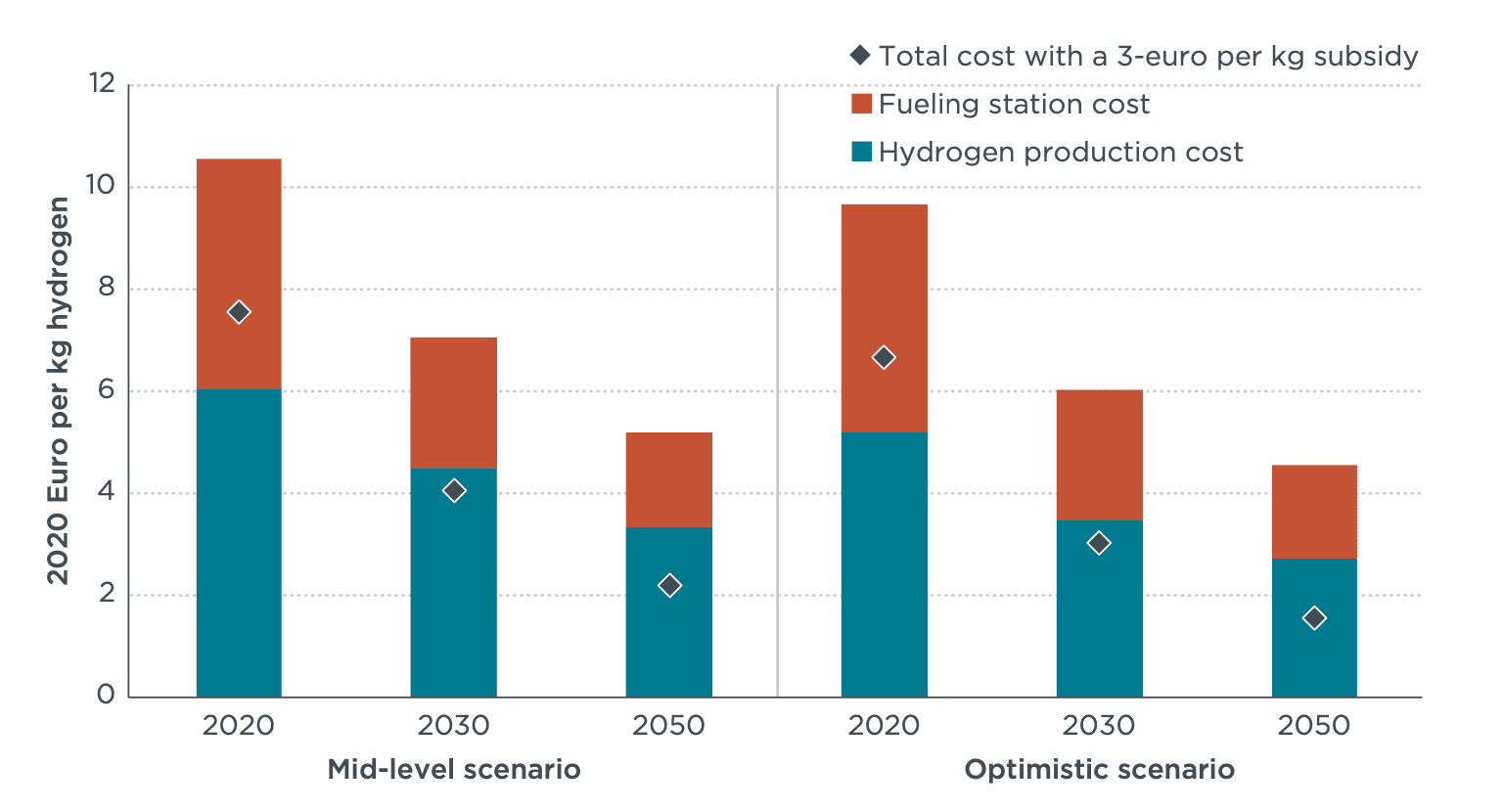Assessment of Hydrogen Production Costs from Electrolysis: United States and Europe
White paper
Cost of renewable hydrogen produced onsite at hydrogen refueling stations in Europe
Renewable hydrogen produced using 100% renewable electricity for water electrolysis is a near-zero greenhouse gas (GHG) energy source that the European Union (EU) could use in its decarbonization efforts. When used in transportation, hydrogen would need to be supplied to a hydrogen refueling station (HRS). The hydrogen can be produced at a central facility and transported to the HRS or directly produced onsite at the HRS. Unlike centralized production, onsite hydrogen production avoids fuel transportation from the production site to the HRS, which can be costly and inefficient. In this study, we investigate current and future at-the-pump renewable hydrogen price at an HRS using onsite electrolysis in EU countries.
The at-the-pump onsite electrolysis hydrogen prices, i.e., the fuel price that consumers pay at the HRS, consists of two main components, hydrogen production cost and HRS cost. We use a discounted cash flow model to estimate the cost of producing renewable hydrogen using wind and solar electricity in 26 EU countries during the 2020 to 2050 timeframe, using a mid-level and an optimistic cost scenario. We include the cost of building and operating a HRS, using the cost estimates from the European Commission. We also evaluate the potential impacts of providing financial support, using a 3-euro per kg hydrogen subsidy for renewable hydrogen production as an illustrative example.
The figure below shows the EU average at-the-pump price for onsite renewable hydrogen, the breakdown into hydrogen production (teal bar) and fueling cost (orange bar), and the total cost when a 3-euro per kg subsidy is provided (grey diamond). Using the mid-level scenario and a 30% HRS utilization rate, we estimate the EU average at-the-pump price of onsite renewable hydrogen to be 11 euros per kg hydrogen in 2020. We expect renewable hydrogen production costs to decline in the future due to technological improvements in both renewable electricity generation and in electrolysis, including likely cost reductions in electrolyzers. We expect the levelized cost of HRS infrastructure to decline on a per kg hydrogen basis mainly due to increased utilization rates, which we assume to be 50% in 2030 and 70% in 2050. Regardless of these cost reduction assumptions, even our optimistic estimate of 6 euros per kg hydrogen is significantly higher than the 2030 target of 1.8 euros per kg announced by the president of the European Commission.

Figure. At-the-pump hydrogen price averaged across 26 EU countries, using mid-level cost scenario and optimistic cost scenario
While onsite renewable electrolysis avoids hydrogen transport costs, it is still expensive and needs policy support to become economically viable. If a 3-euro per kg hydrogen subsidy were provided to renewable hydrogen production, the industry could advance down the price curve by 10 years. Moreover, this subsidy amount can enable cost parity, from a fuel cost perspective, of onsite electrolysis renewable hydrogen and diesel before 2030.
Beyond financial support for hydrogen production, robust regulations on the source of electricity are crucial to ensure the true climate benefit from renewable hydrogen. Regulations are not only needed to ensure that 100% renewable electricity is used, but more importantly, that the renewable electricity being used is in fact additional.
